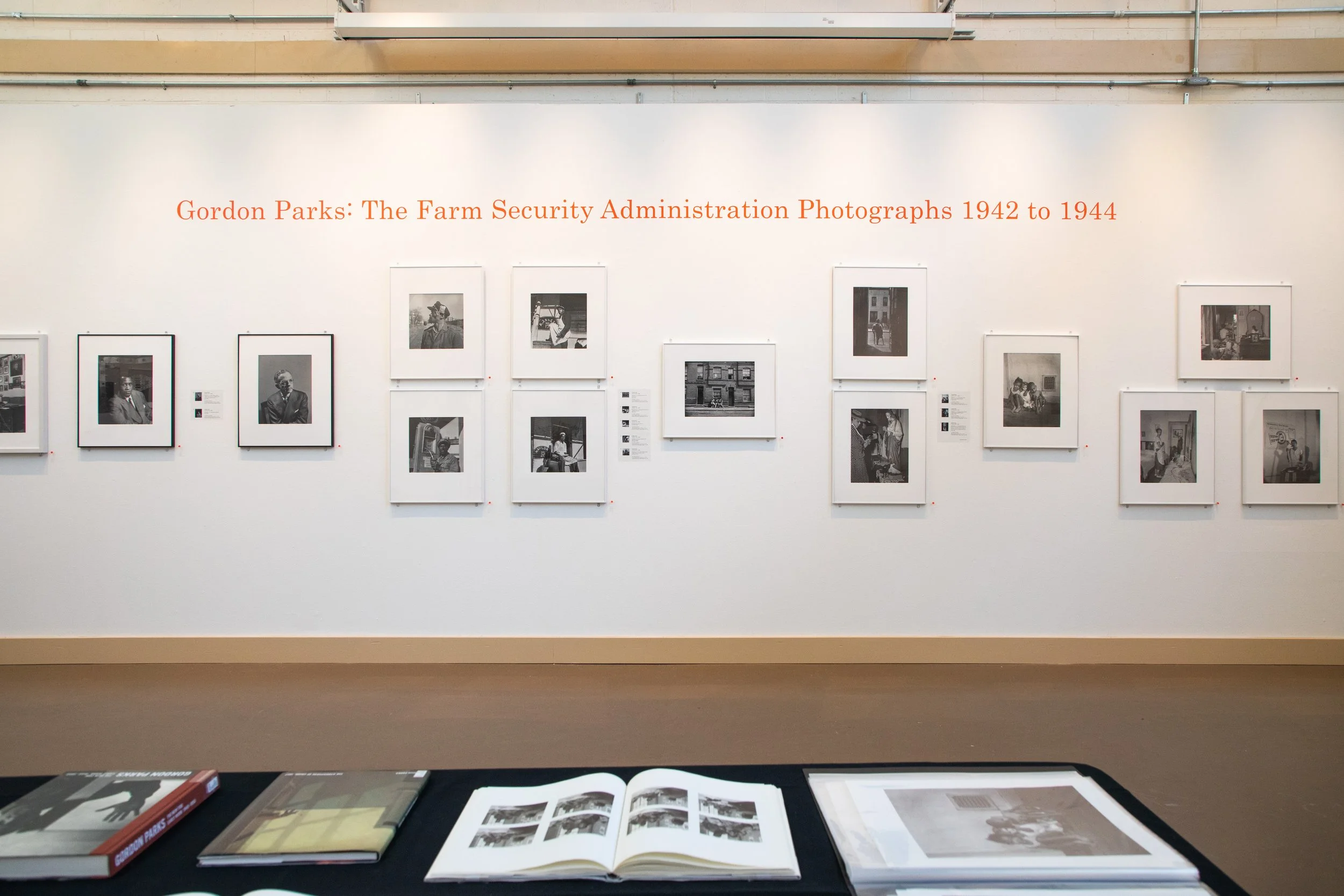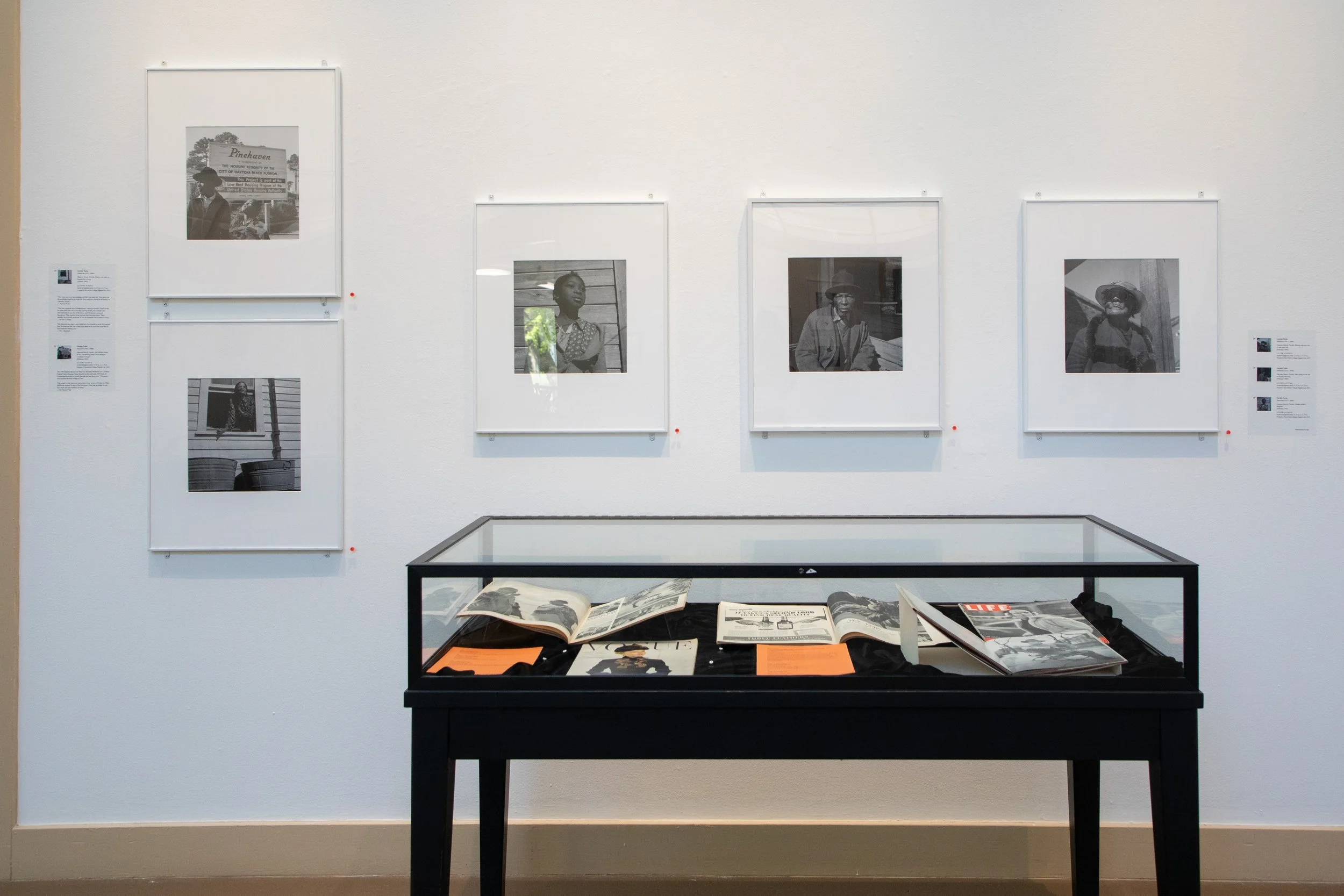Gordon Parks, The Farm Security Photographs 1942 to 1944
For my first project at Haverford College as the Laboratory Technician, I was assigned to restore 11 photographic negatives by renowned photographer Gordon Parks for an exhibition at the Atrium Gallery of Jane Lutnick Fine Arts Center. I spearheaded the finalization of this restoration project, working on Parks’ photographs of the community in Daytona Beach, scanned by the Library of Congress.
ATRIUM GALLERY, HAVERFORD COLLEGE | January 30 — April 21, 2023 | Haverford, pa
Curated by William Earle Williams, Audrey A. & John L. Dusseau Professor in the Humanities, Professor of Fine Arts
“Gordon Parks, The Farm Security Photographs 1942 to 1944 consists of a selection of Parks’ work printed from high resolution files of his images scanned from the original negatives in collection of the Library of Congress Washington, D.C., printed in the Digital Photography Lab at Haverford College. Many of these images are unknown and presented in this exhibition to give a fuller accounting of the early work that was to define Parks’ career.
Gordon Roger Alexander Buchanan Parks, (1912-2006) was a documentarian whose work covers many genres from reportage to fashion. A self-taught photographer with little professional training, Parks won a Julius Rosenwald Fellowship in 1942; this led to a position with the photography section of The Farm Security Administration (FSA) in Washington, D.C., and later, the Office of War Information (OWI).
Working for these agencies, which were then chronicling the nation’s social conditions, Parks quickly developed a personal style that would make him among the most celebrated photographers of his era. The subject of his work covers American life and culture from the early 1940s into the 2000s, with a focus on race relations, poverty, civil rights, and urban life. Parks was also a distinguished composer, author, and filmmaker who interacted with many of the leading people of his era—from politicians and artists to athletes and other celebrities.
Parks' extraordinary pictures allowed him to break the color line in professional photography while he created remarkably expressive images that consistently explored the social and economic impact of poverty, racism, and other forms of discrimination. In 1944, Parks left the OWI to work for the Standard Oil Company's photographic documentary project. Around this time, he was also becoming a freelance photographer for Glamour and Ebony, which expanded his photographic practice and further developed his distinct style.”
— William Earle Williams
Technical Notes
“Gordon Parks: The Farm Security Administration Photographs 1942 to 1944 consists of 36 black and white photographs printed from high-resolution digital scans of Parks’ original negatives in the Library of Congress collection, Washington, D.C. These scans are available to be viewed and downloaded by the public for free through the Library of Congress website. The photographs in this exhibition have been researched, restored and printed in the Digital Lab at Haverford College.
Gordon Parks’ original negatives were scanned by the Library of Congress to document the photographs exactly as they were, the only adjustment being inverting the negative to a positive digital image. Parks’ work in this online collection remains reminiscent of what you would see on a photographer’s contact sheet created in the darkroom, with only slight imperfections noticeable on a number of frames, likely caused during the development process.
To transform these digital files to exhibition quality prints, the images have undergone an intricate restoration process using Adobe Photoshop. While making these adjustments, the integrity of the original photographs was maintained. Only scratches and dust seen on the surface of the negatives were removed using various tools such as spot healing and clone stamping. The shadows and highlights in the photographs were brought forward using the masking tool to accentuate detail available in the original negative. The digital files have been resized to print quality and were not cropped in order to preserve the original aspect ratio of the photograph. Initial photographic proofs were printed to further examine each image and how the restoration translated to a paper medium. From these proofs, additional adjustments were identified and corrected until arriving at a finalized reproduction.
The bulk of this exhibition was restored and printed by former Photography Lab Technician Daniel Burns. Images in this exhibition taking place in Washington, D.C. Harlem, New York and Haverstraw, New York saw over a year-long process in the Digital Lab at Lutnick Fine Arts Center, Haverford College. The photos selected from Gordon Parks’ time in Daytona Beach were restored and printed by current Photography Lab Technician Shaina Nyman, and saw a one month process from research, to final framed photographs. After experimenting with various papers, Burns selected two versions of Fine Art Baryta paper. This type of paper originates from the traditional black and white darkroom. The name Baryta is derived from the layer of Barium Sulphate which stops darkroom chemistry from affecting the fiber base of the paper, and further enhances shadow density of the image. The prints in this exhibition have been created with the intention of highlighting Gordon Parks’ artistry with lighting, and choosing a paper reminiscent of a darkroom print was a detail integral to reproducing his work faithfully. The final prints were allowed to dry overnight in the Photography Lab, then stored in archival sleeves until the process of matting, framing and installation began.”
— Shaina Nyman, Photography Lab Technician






